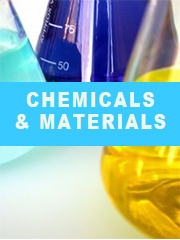TOP CATEGORY: Chemicals & Materials | Life Sciences | Banking & Finance | ICT Media

Download Report PDF Instantly
Report overview
Biological Method Acrylamide refers to the production of acrylamide using enzyme-catalyzed reactions, typically involving nitrile hydratase enzymes. This innovative process transforms acrylonitrile into acrylamide with high purity and reduced environmental impact, presenting an alternative to traditional chemical synthesis. The biological method aligns with global sustainability goals, offering potential advantages in industries requiring high-purity acrylamide, such as biotechnology, pharmaceuticals, and specialty polymers.
The China Biological Method Acrylamide market was valued at US$ 68.5 million in 2024 and is projected to grow to US$ 105.3 million by 2030, achieving a CAGR of 7.4% during the forecast period 2024-2030. In 2023, approximately 48,000 metric tons of acrylamide were produced using biological methods in China, representing about 5% of total acrylamide production.
This share is rapidly increasing due to the rising demand for bio-based chemicals and stricter environmental regulations. The growing adoption of biological method acrylamide in high-value applications has positioned it as a significant growth segment within the broader acrylamide market.
Sustainability Push: Increased focus on green chemistry and eco-friendly processes is driving the adoption of biological acrylamide.
High-Purity Demand: Industries such as pharmaceuticals and biotechnology require ultra-pure acrylamide, which the biological method can deliver.
Regulatory Support: China’s government initiatives promoting bio-based chemicals and green technologies bolster market growth.
Technological Advancements: Development of highly efficient biocatalysts with conversion rates of up to 99.5% enhances production efficiency and scalability.
Higher Production Costs: Biological methods have higher initial costs compared to traditional chemical synthesis, impacting widespread adoption.
Complex Manufacturing Process: Scaling up enzyme-catalyzed reactions can be challenging, requiring significant investment in research and infrastructure.
Emerging Applications: Innovations in personalized medicine and targeted polymer therapeutics are opening new avenues for bio-based acrylamide.
Bioeconomy Development: Government focus on bioeconomy offers funding and support for bio-based acrylamide production.
Competitive Pressure: Chemical synthesis remains cost-effective for large-scale production, posing competition to biological methods.
Enzyme Stability: Ensuring enzyme stability under industrial conditions is crucial for consistent production quality.
China dominates the Biological Method Acrylamide market in Asia due to its significant investments in biotechnology and strong regulatory support for bio-based products. Key regions contributing to market growth include:
Eastern China: A hub for chemical and biotech industries, driving demand for sustainable acrylamide.
Southern China: Growth in the pharmaceutical sector boosts the adoption of bio-based acrylamide for medical applications.
Northern China: Investments in R&D and advanced manufacturing technologies fuel market expansion.
The China Biological Method Acrylamide market is competitive, with major players focusing on R&D, capacity expansion, and strategic partnerships. Leading companies include:
Zibo Xinye Chemical Co., Ltd.
Shandong IRO Biochemical Co., Ltd.
Anhui Jucheng Fine Chemicals Co., Ltd.
SNF China
Beijing Hengju Chemical Group Corporation
These companies leverage technological advancements to improve enzyme efficiency and scalability, enhancing their market positions.
Water Treatment
Largest application segment, driven by the need for eco-friendly flocculants.
Pulp and Paper Industry
Increasing adoption due to demand for sustainable processing aids.
Oil and Gas Industry
Growth in enhanced oil recovery techniques promotes use.
Mining
Bio-based acrylamide used in mineral processing and wastewater treatment.
Paints and Coatings
High-purity acrylamide finds applications in advanced coatings.
Other Applications
Includes pharmaceuticals, personal care products, and specialty polymers.
Acrylamide Solution
Dominates the market due to ease of handling and application in water treatment.
Acrylamide Crystals
Preferred for specialty applications requiring high-purity acrylamide.
The major players in the China Biological Method Acrylamide market include:
Zibo Xinye Chemical Co., Ltd.
Shandong IRO Biochemical Co., Ltd.
Anhui Jucheng Fine Chemicals Co., Ltd.
SNF China
Beijing Hengju Chemical Group Corporation
Kemira China
Xitao Polymer Co., Ltd.
Jinan Haohua Industry Co., Ltd.
Chongqing Acrylamide Co., Ltd.
Shandong Shuiheng Chemical Co., Ltd.
Global Biological Method Acrylamide: Market Segmentation Analysis
This report provides a deep insight into the global Biological Method Acrylamide market, covering all its essential aspects. This ranges from a macro overview of the market to micro details of the market size, competitive landscape, development trend, niche market, key market drivers and challenges, SWOT analysis, value chain analysis, etc.
The analysis helps the reader to shape the competition within the industries and strategies for the competitive environment to enhance the potential profit. Furthermore, it provides a simple framework for evaluating and assessing the position of the business organization. The report structure also focuses on the competitive landscape of the Global Biological Method Acrylamide. This report introduces in detail the market share, market performance, product situation, operation situation, etc., of the main players, which helps the readers in the industry to identify the main competitors and deeply understand the competition pattern of the market.
1 What is the current market size of the Biological Method Acrylamide market?
The market size was valued at US$ 68.5 million in 2024 and is projected to reach US$ 105.3 million by 2030.
2 Which are the key companies operating in the Biological Method Acrylamide market?
Leading companies include Zibo Xinye Chemical Co., Ltd., Shandong IRO Biochemical Co., Ltd., and Anhui Jucheng Fine Chemicals Co., Ltd..
3 What are the key growth drivers in the Biological Method Acrylamide market?
Key drivers include sustainability initiatives, high-purity demand, regulatory support, and technological advancements in biocatalysis.
4 Which regions dominate the Biological Method Acrylamide market?
Key regions include Eastern China, Southern China, and Northern China.
5 What are the emerging trends in the Biological Method Acrylamide market?
Emerging trends include pharmaceutical-grade acrylamide, personalized medicine applications, and advancements in enzyme technologies.
Key Indicators Analysed